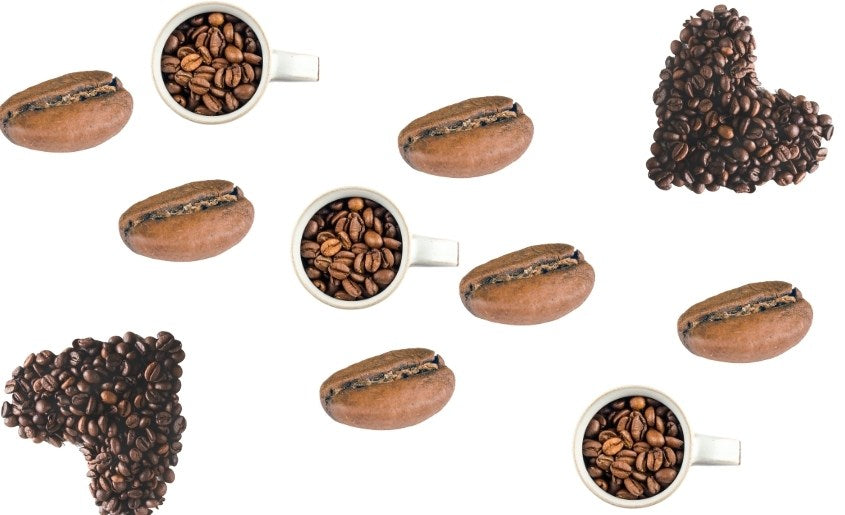As a professional coffee barista, I've spent years perfecting my craft and learning about the unique qualities of different coffee beans.
One bean that never fails to capture my imagination is Kona coffee.
Grown in the beautiful volcanic slopes of Hawaii, Kona coffee is a rare gem that offers a flavour experience unlike any other.
It was about time to share my knowledge and passion for this exceptional coffee with you in this ultimate guide.
We'll delve into the fascinating history of Kona coffee, exploring its origins and what makes it so unique.

And, of course, I'll be revealing my top recommendations on where to buy the best Kona coffee beans in the UK.
So, grab a hot cup of joe and join me as we embark on this exciting journey of Kona coffee beans.
Trust me when I say your taste buds will thank you for it.
Where to buy Hawaii Kona Coffee Beans in the UK (Online Brands) H2
You've heard so much about Hawaii Kona coffee beans and want to try them out. But there is one tiny problem – where to get genuine Kona Coffee in the UK for your Espresso or filter coffee.
Don't know what the difference between espresso or filter coffee? relax, I have a complete espresso vs filter vs french press vs drip coffee guide for you here.

Meanwhile, I've been down that road and bought subpar coffee twice without anyone guiding me. Let’s avoid that for you.
So, I took the time to review dozens of brands and online coffee shops in the UK that sell the real thing.
After two awful experiences, I didn't want a third. So, here are the top five recommended brands to buy Hawaii Kona coffee in the UK.
The Coffee Bean Shop
You see, this family-run business was established in 2003 by Lorna and John Bruce, and ever since, they've been known for their top-notch coffee beans.
What's unique about The Coffee Bean Shop is its dedication to quality and ethical sourcing.

They source beans from all corners of the globe, including the sought-after Kona coffee from Hawaii.
They have one of the most incredible coffees – their Hawaiian Kona. These coffee beans come straight from Kealakekua in the southern Kona region, so what you're getting is the real deal.
The taste? Well, it's got this slightly syrupy, creamy texture and lovely bright acidity.
You'll also feel those gentle winey nuances and a fantastic aftertaste that lingers long enough.
Click here to check out the Coffee Bean Shop Kona coffee edition.
Coffee Direct
Coffee Direct is another excellent online brand to grab top-notch Hawaiian Kona coffee beans in the UK.
These guys have been around for over 30 years, and Martin founded it.
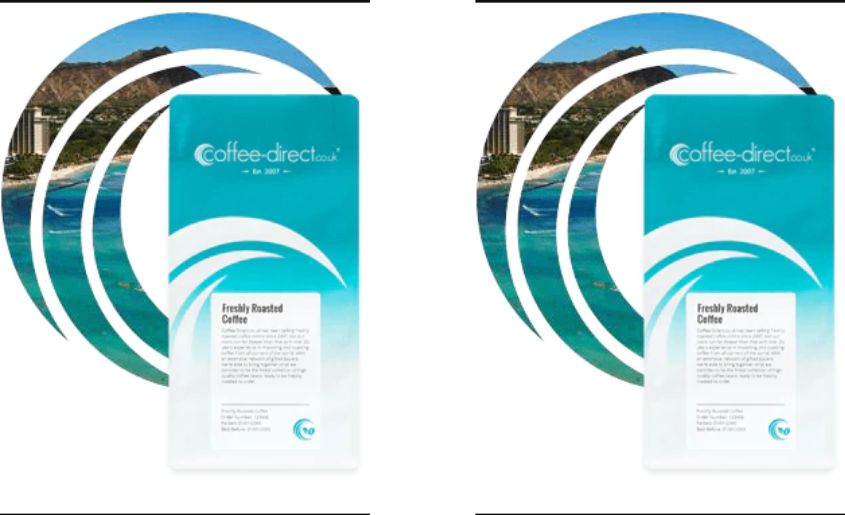
Aside from coffee, they sell tea, coffee equipment and everything else you might need.
But let's talk about their Kona Coffee. Coffee Direct's Hawaiian coffee is called Kona Coffee - just plain and simple.
They've got different grinds and quantities to suit your needs. If you buy more than two bags, they'll discount you.
This luxuriously smooth and pleasantly mild coffee comes from a family-run plantation in this little town called Captain Cook, which is on the volcanic slopes of Mauna Loa.
The flavours of this Arabica Kona are exquisite, making it a real luxury treat. Plus, it's got a full body and moderate acidity, so it's perfect if you enjoy cafetiere or filtered coffee.
Click here to check out the Coffee Direct Kona Coffee Hawaii edition.
Tropic Coffee
Tropic Coffee is a family business that began in 1983 when Martin, who had loads of experience in the coffee industry, decided to start his venture.
Later, in 2006, his son David joined the team and has mastered the art of roasting and blending ever since.

They're based in Norfolk and supply excellent coffee all over the UK.
The first time I browsed through their online store, all I could see were single-origin, custom blends, and rare coffees. And one of those rare gems is their Hawaiian Kona coffee.
Their Kona coffee is clean and well-balanced, with a medium body and a delightful, bright acidity. It's often quite sweet too.
Click here to check out the Tropic Coffee Hawaiian Kona coffee edition.
Sea Island Coffee
Still can’t choose among the three online brands I mentioned above?
You may want a brand that offers more than one Kona coffee option. First, I would like to tell you about Sea Island Coffee.

They started in 2007, and since then, they've been committed to sourcing some of the finest and rarest coffees from around the globe.
Now, the founder of Sea Island Coffee is this coffee nerd named David Cooper. He's passionate about coffee and wants to bring these exceptional beans to the UK market.
And guess what? He succeeded because they're based right in London.
They've got a fabulous collection of exotic coffees, including the much-loved Hawaiian Kona Coffee.
Do you know what I find remarkable about Sea Island Coffee? They've got not just one but two high-quality Kona coffee.
There's the Greenwell Estate Kona, Hawaii. It's got this smooth, medium body with a spicy kick. But what's genuinely delightful is the slightly tangy citrus flavour that finishes with a lovely milk chocolate aftertaste.
Remember I said they were two options? Well, the other is their Greenwell Estate Kona Peaberry, Hawaii.
This one has a smooth, medium body with hints of spices. It tastes like a slightly tangy citrus flavour, finishing with a lovely milk chocolate aftertaste.
Click here to check out Sea Island Coffee Kona coffee editions.
Leaf & Bean
So, the other day, I stumbled upon this awesome family-run business called Leaf & Bean.
Do you know who started it? Os Veli, back in 1997.

They're based in the Midlands, and since then, they've been serving up some incredible coffee and teas to us Brits.
They offer these amazing Hawaiian coffee beans with a superbly rich flavour and, wait for it, chocolatey tasting notes.
They've been going strong for over two decades, and it's no wonder why – their passion for great-tasting brews shines through.
If you want to try out some great-tasting Kona coffee in the UK, you should check out their online store.
Click here to check out Leaf & Bean Hawaiian Kona coffee edition.
What Is Hawaiian Kona Coffee
It's pretty amazing how many different types of coffee exist worldwide, right? Each region and every person seems to have their favourite coffee blend that they can't get enough of.
But have you found your ultimate coffee yet, or are you up for exploring something new?

Hawaiian Kona coffee could be what's missing from your wishlist.
Hawaiian Kona coffee is an Arabica coffee grown on the slopes of the Mauna Loa and Hualalai volcanoes on Hawaii's Big Island.
The rich volcanic soil and the unique weather conditions in that area create an incredible taste that's hard to come by elsewhere.
Just a heads up, though – genuine Kona coffee comes only from the Kona coffee belt around Hualalai and Mauna Loa.
The Big Island does produce other types of coffee, but they're not the same as the famous Kona coffee.
Hawaiian Coffee History
You know, the captivating story of Kona coffee is one worth sharing.
It all started with a chap named Samuel Ruggles, who, back in 1828, brought coffee plants to the region for the first time.

Funnily enough, Don Francisco de Paula Marin had tried to do the same thing in 1817, but it didn't work out.
Between 1828 and the 1850s, coffee plantations became all the rage in the area.
But things got worse than expected. Issues with labour, weather, and pests led to the crop nearly disappearing within a decade.
The situation didn't improve until 1873 when Henry N. Greenwell presented Kona coffee at the World's Fair in Vienna.
However, even after that big moment, Kona coffee took its sweet time to become popular. It wasn't until 1892 that Hermann Widemann brought Guatemalan coffee to the region, which ended up being a huge hit in Hawaii.
They even gave it a fancy name: Kona Typica. This helped increase demand and production, but only until 1899.
In 1899, coffee prices took a nosedive, and the crop faded. But here's the interesting part: during World War I, in 1917 and 1918, the demand for coffee skyrocketed.
Brazil, a major coffee producer, was hit by frost, and suddenly Hawaii became the place to get your coffee fix.
And that, my friend, is how Kona coffee's history unfolded.
What Does Hawaiian Kona Coffee Taste like
Kona coffee has an amazing flavour profile, which is why it's so famous. It's got a delicate and approachable taste that people just can't get enough of.
The volcanic soil in the region is packed with minerals, which contribute to various flavours that can be enhanced during roasting to suit different preferences.

Usually, Kona coffee tastes bright, crisp, and clean with a silky, syrupy body. You'll find brown sugar, milk chocolate, honey notes, and a subtle fruity touch.
Sometimes, I notice macadamia or hazelnut flavours replacing the fruitiness, giving it a nutty twist. And don't be surprised if you taste hints of cinnamon, spice, or liquorice.
The Hawaii Department of Agriculture grades Kona coffee beans based on various factors, like shape, size, cleanliness, moisture content, defects, and aroma and flavour.
It's kind of like how Kenya values its larger AA beans. In Kona coffee, the largest beans are thought to have the most desirable traits.
But instead of using letters, they use numbers. So, for example, the best of the bunch measure at 19/64" and are called Extra Fancy – about 20% of the crop falls into this category.
There are four more Type 1 Kona coffee grades: Fancy, Number 1, Select, and Prime.
Then there's Type 2, which consists of the Kona Peaberry – a rare, pea-shaped, tiny bean. Peaberry makes up only about 3% to 4% of the entire crop.
Interestingly, Kona Peaberry beans are highly sought-after because the natural mutation amplifies their flavour, producing more intense coffee.
Most Popular Hawaii Kona Coffee Growing Regions
Enjoying the article so far? Well, I'm glad that you now have a good grasp on the history behind this coffee and what it tastes like up to this point.
By the way, in my previous post, I wrote a comprehensive guide on:
Like Kona coffee, these are some of the best coffee beans in the world, so you should check them out if you’re looking for a great alternative at a more budget-friendly price.
Alright, back to our discussion. Hawaii Kona coffee is grown in certain regions of the country. So, I've listed the most popular regions I know about below. Then, in the next few paragraphs, I'll share with you what makes these regions unique.
- Kona
- Ka'u
- Hamakua
- Puna
- Maui
- Kauai
- Molokai
Kona
Starting with Kona, it's a remarkable place for coffee. The Kona coffee belt is a narrow strip of land, about 30 miles long and 2 miles wide. The elevation ranges from 500 to 3,000 feet.
The combination of volcanic soil, mild nights, and unique weather patterns create an ideal environment for growing coffee. Honestly, that's why Kona Coffee is so highly regarded worldwide.
Ka'u
After the sugar market collapsed, the region turned to coffee farming. The farms here are mostly small, less than 5 acres, and situated between 1,000 and 2,500 feet in elevation.
The conditions are similar to Kona, so you can also expect excellent coffee from this region.
Hamakua
Hamakua has a rich history in agriculture. The region is now home to around 150 acres of coffee cultivation. Most of the farms are small and family-run, where beans are handpicked.

They're located on the northern slopes of Mauna Loa, between 350 and 2,000 feet, and the soil there is incredibly fertile.
Puna
Puna is the Big Island's newest coffee-growing region, with around 125 acres of land under cultivation. As the wettest part of the island, Puna's climate is relatively cold and cloudy.
This results in coffee with distinct acidity, aroma, and body. The farms are located between 1,000 and 2,500 feet in elevation.
Maui
Coffee farming thrives in Maui due to the island's diverse terrain and micro-climates. With about 600 acres of coffee crops, farmers are experimenting with various bean varieties and processing techniques.
The Maui Mokka is a prime example of its success, as it was featured in Starbucks' Special Reserve coffee line in 2012.
Kauai
Kauai has a fascinating history, home to Hawaii's first commercial coffee operation. In addition, the region boasts a stable climate with plenty of sunshine and mild nights.
Most of the coffee is grown on the lower slopes of Mount Waialeale, which receives abundant rainfall.
This allows nutrients to flow from the mountain soil to the farms, nourishing the coffee trees below.
Molokai
Lastly, Molokai's coffee production primarily focuses on a single plantation growing the red catuai arabica varietal.
This 150-acre plantation is located in the Kualapu'u region, which shares Hawaii's characteristic fertile volcanic soil and a stable climate. As a result, the coffee produced here is of high quality and truly unique.
Each region's charm and characteristics contribute to its coffee's distinct flavours and profiles.
It's fascinating how the environment can have such a profound impact on coffee.
Characteristics Of Hawaiian Kona Coffee
I understand that you're probably thinking — what do the characteristics have to do with this? Well, it tells a lot about these beans.
It's important to know the characteristics of Hawaii Kona coffee if you intend to purchase these beans for your next coffee refill.

Don't tell me you're not planning on getting these beans already. So, let's look at the unique characteristics of Kona Coffee from Hawaii.
Characteristics #1: Where it's grown
One thing that makes it so special is that it's grown on volcanic slopes, which gives the beans a unique flavour and aroma. It's like nothing you've ever tasted before!
Characteristics #2: How it's harvested
They handpick the coffee cherries, ensuring they only get the best ones. It's pretty impressive how much care goes into it, and it's also better for the environment.
Characteristics #3: How these beans are processed
When it comes to processing the beans, they use the wet method.
They wash off the pulp and mucilage from the beans, which helps maintain the coffee's natural sweetness and acidity while keeping mould and fermentation at bay.
Characteristics #4: The way these speciality coffee beans are graded
They grade the beans by size, shape, colour, and density. The top dog is Kona Extra Fancy, and the list goes down to Kona Prime.
Lower-grade beans get mixed with other coffees or sold as generic Hawaiian coffee.
Characteristics #5: How the beans are roasted
As for roasting, there's something for everyone. You've got medium, medium-dark, and dark roasts to choose from.
It's amazing how roasting can bring out different flavours and aromas and even reduce the caffeine content.
Characteristics #6: Taste profile
Now, when it comes to taste, Kona coffee is just fantastic. It has this medium body and smooth texture that's hard to resist. In addition, the flavour is so well-balanced, with a mix of sweetness, acidity, and bitterness.
And the aroma? Oh, it's like a bouquet of floral and fruity notes with a hint of nuts and chocolate.
So, what do you think? Sounds l ike something you'd like to try, right?
ike something you'd like to try, right?
Recommended Brew Methods for Kona Coffee
Oh, you've finally decided to buy some Kona beans, right? Brilliant! Let's ensure you don't mess up brewing them because that would be a real tragedy.
You might be wondering which brewing method is the best to bring out all those lovely flavours from your Kona beans.
The main goal is to enjoy that unique Kona coffee taste without bitterness or astringency.
French Press
Now, my favourite method is using a French Press. It doesn't have a paper filter, so all those delicious coffee oils end up in your cup, giving you the full flavour experience of your Kona beans.
You'll be so grateful for this, especially if you use 100% Kona coffee. The French Press also gives you a rich, full-bodied coffee that many people love for speciality coffees.
Pour-over
Not everyone enjoys the thicker texture and silty residue you sometimes get with a French Press. Plus, some people worry about cholesterol levels.
Kona coffee is one of the best coffee beans for pour-over if you prefer a clean cup. It'll give you a brighter, lighter-bodied coffee with more subtle flavours.
AeroPress
Can't decide between the two? The AeroPress might be the perfect middle-ground for you. It produces a coffee between a drip coffee and an espresso.
You'll get a more robust cup than the pour-over but less intense than the French Press.
I recommend you try these methods and see which suits your taste buds best. And don't forget to share your experience using these methods in the comment box.
How Is Kona Coffee Grown
Growing Kona coffee is quite a labour-intensive process, you know.
The seeds for these coffee trees are found inside the "cherry" (yep, coffee is technically a fruit). They're usually silver and have an outer layer called parchment.
The early days of a Kona tree's life in Hawaii are important for its future success. Farmers often buy Kona coffee plants as seedlings to nurture them carefully during those crucial first years.

A healthy tree can produce valuable berries for over 50 years.
Fortunately for the Kona district, the humid weather is perfect for sprouting these trees. A thriving Kona tree will grow to nearly two feet tall in its first year and reach three to six feet by its third year when it's considered mature.
When a Kona tree is ready to reproduce, it sprouts lovely white blossoms. Locals call this "Kona snow". After that, it takes about four months for cherries to form. Finally, the cherries ripen in less than a year and can be used to make coffee.
Coffee from Kona is one of the most expensive types in the world because it needs special care from farmers.
Kona plants need regular maintenance throughout their lives, like pruning, which involves removing dead and overgrown branches to encourage growth for the next year. This usually happens in the first quarter of the year.
Even when the cherries start to ripen, the careful cultivation of Kona coffee continues.
Now that you understand how this coffee is grown, I'll like us to look at how the beans are being harvested.
How Is Kona Coffee Harvested
The harvesting process is not an easy feat. So remarkable these farmers spend an entire day picking these beans by hand.
So, you can't blame these speciality coffee beans for being rare and expensive, right?

The harvesting season for Kona coffee usually starts in late August and goes until December. The busiest time falls between late September and early November.
But the harvest can stretch throughout the year at higher elevations in Kona.
Kona coffee cherries are ready to be picked when they change from green to slightly red and then to a glossy red. Although, there are some yellow-fruited varieties like 'Yellow Caturra' or 'Yellow Catuai' that stay yellow and never turn red.
Another way the farmers check if the cherries are ripe enough for harvesting is to see if they can squeeze the seeds (parchment coffee with beans inside) out by hand.
If the fruit is too hard and they can't squeeze the seed out, then it's too immature to be processed. Sometimes, under "overbearing dieback" conditions, the fruit might change from green to reddish-brown.
I know all these sounds too much, but stick with me, alright.
These cherries are usually smaller and probably have immature, low-quality beans. Therefore, they'll typically float on top during wet-milling and get removed during processing.
The coffee cherries on a tree don't all mature simultaneously. There are different stages of cherry development on the same tree.
So, pickers have to handpick individual cherries when they're ripe. It's common for them to pick 4 to 10 rounds in one season, with a 3 to 4-week interval between each picking.

The number of rounds they can pick depends a lot on the elevation. For example, coffee ripens almost all year round in upper Kona areas, while in lower areas, it ripens for four months.
During the peak harvest season, experienced pickers can collect between 200 and 400 pounds of coffee daily. In addition, the equipment these pickers use for hand-harvesting coffee is simple and inexpensive.
They use baskets, holding hooks for positioning branches for picking, and burlap bags to transport the cherries from the orchard to the processing area.
In the past, they used locally made baskets woven from pandanus leaves. Nowadays, they use plastic baskets or imported woven baskets from Central America.
Can you pick 200 pounds of coffee a day by hand?
I forgot you're not an experienced picker, so let me beat that number down. How about 100 pounds a day? Of course, you can't.
How To Buy Hawaii Kona Coffee
If you're buying Hawaii Konan coffee, you must ensure you get the real deal. That way, you can enjoy the flavour of the beans. Let me give you some tips I use when buying authentic Kona coffee.
I'll start by saying it's best to buy directly from a reputable online coffee brand or a coffee plantation on the Big Island of Hawaii.

You can find genuine Kona coffee in these places.
When you're checking out the coffee, look at the packaging. If it's pure Kona, it'll say so on the label, and you'll see a notation that it's 100% Kona coffee.
If it's not pure Kona, the package will let you know that too, and it'll tell you the exact amount of Kona coffee included in the blend.
You should know that Kona coffee blends can use the Kona coffee label if they contain at least 10%. They must specify the Kona content, though, so you'll find that information right on the package.
But your thought could be, "James, I'd love to try these coffee beans, but I don't want to spend so much on them. I'd recommend a Kona blend instead of pure Kona coffee.
Blends have as little as 10% Kona coffee; the less pure Kona coffee in the blend, the less expensive it'll be. So it's a great option if you're trying to stick to a budget but still want to enjoy a taste of Kona.
Hawaiian Coffee Statistics & Facts
Coffee has been grown in Hawaii for over 150 years, and it's become a huge part of the state's economy.
Hawaii is the top coffee producer in the United States – I bet you didn't know that!
So, let's dive into some interesting facts and stats about Hawaiian coffee you might not be aware of.
Fact #1: Hawaiian Coffee Production
These days, coffee is grown on more Hawaiian farms than any other crop. As of January 2021, the USDA estimated that about 6,900 acres of land were used for coffee cultivation in Hawaii.
Even though that's less than 1% of all coffee grown worldwide, the state's coffee industry is still worth around $250 million, split between production and consumption.
Fact #2: Kauai Coffee Production
Did you know the largest coffee plantation in the US is right there on the Hawaiian island of Kauai? Kauai Coffee grows, harvests, roasts, and sustainably packages their coffee, all on their estate located on the island's south shore.
Fact #3: Maui Coffee Production
Over on the island of Maui, around 600 acres are dedicated to coffee growing. Maui is unique because it has a mountainous landscape and a variety of microclimates, allowing for a wider range of crops to be grown.
Fact 4#: Molokai Coffee Production
Molokai, nestled between Oahu and Maui, is home to a small village called Kualapu'u.
There, you'll find a 150-acre plantation and a mill – the only place to get 100% Molokai coffee. Molokai grows Red Catuai, an Arabica coffee variety developed in Brazil in 1949, chosen for its high quality and compatibility with local growing conditions.
Fact 5#: Hawaiian Coffee Grows In Volcanic Soil
The rich, volcanic soil in Hawaii is perfect for growing coffee. Even though the crops are planted relatively close to active volcanoes, lava eruptions don't directly affect the coffee.
All the lava stays inside the caldera, like water in a pool.
Fact 6#: Hawaiian Coffee Benefits From Volcano Eruptions
Believe it or not, volcanoes can positively or negatively affect Hawaiian coffee. The indirect impact on coffee growth and agriculture comes from gaseous emissions and their influence on the weather.
Farmers say that when a volcano like Kilauea erupts, the weather dries, creating more tropical conditions ideal for coffee growth.

Too much rain, conversely, can confuse coffee trees, leading to smaller blooms of cherries at different times, making harvesting more challenging and expensive.
Frequently Asked Questions
I've said quite a handful of things about these coffee beans, so it's not surprising if you have some vital questions right now.
I'd like to see those questions in the comment section. Don't worry; I'll do my best to answer every question I see in the comment box.
But before those questions, I've compiled a list of some questions I've been asked over the years about Kona coffee. So there is a high chance that you might even see the question you have in mind below.
Is Hawaii Kona Coffee Roasted Light Or Dark?
Kona coffee can be roasted light or dark, depending on what the roaster wants. The roast level can change the coffee's taste. For example, if you roast Kona beans at around 430-450 degrees Fahrenheit for about 12-18 minutes, you'll get a dark roast. This process takes away some of the beans' original flavours, but it gives the coffee a roasted taste and lowers the caffeine content.
Is Hawaii Kona coffee low in acid?
You bet! Hawaii Kona coffee is famous for its smooth, low-acid taste. The volcanic soil in the Kona district and the island's perfect climate help create this lovely, mild acidity.
How much coffee does Hawaii produce?
Hawaii makes around 5 million pounds of coffee yearly, most of which comes from the Kona district. While that's just a tiny part of the world's coffee production, Hawaiian coffee is prized for its top-notch quality and unique flavours.
Is Hawaiian Kona Coffee Arabica Or Robusta?
Hawaiian Kona coffee is an Arabica type. Arabica beans are usually considered better quality and have more complex flavours than Robusta beans, which are often more bitter and have more caffeine.
Is Kona Coffee Stronger Than Regular Coffee?
The strength of Kona coffee depends on things like roast level, how you brew it, and the coffee-to-water ratio. That said, the high elevation where Kona coffee grows means fewer oxygen molecules break down the beans' chlorophyll content, giving the roasts a stronger taste.
Is Kona Coffee Handpicked?
Absolutely!
Kona coffee is handpicked. This hands-on approach lets farmers choose only the ripest coffee cherries, which means the beans are top quality. Plus, handpicking helps protect the trees and the unripe cherries for future harvests.
Where does Kona Coffee come from?
Kona Coffee is from the Kona district on the Big Island of Hawaii. The area's unique microclimate, high elevation, and nutrient-rich volcanic soil make it perfect for growing this highly prized coffee.
Where is Kona Coffee grown?
Kona coffee grows in the Kona district, on the western slopes of the Mauna Loa volcano on the Big Island of Hawaii. This region provides the right elevation, rainfall, and temperature mix for growing amazing coffee beans.
Does Kona Coffee Have Caffeine?
Yes, indeed! Kona coffee has caffeine, just like other kinds of coffee. The high elevation where it grows means fewer oxygen molecules break down the beans' chlorophyll content, so the roasts have a stronger taste profile.
How much caffeine is in Kona coffee?
On average, a cup of medium-dark roasted Kona coffee has about 54mg of caffeine. That's more than your average Colombian coffee, which ranges between 30 and 50mg. But Kona isn't the most caffeinated coffee out there. For example, some Arabica coffee varieties pack 100mg of caffeine or even more.
Is Kona Coffee Good For You?
Like other coffee types, Kona coffee can have some health benefits if you drink it in moderation. It's got antioxidants, which can help protect your cells from damage, and it might also improve cognitive function. However, people react differently to caffeine and coffee, so it's important to listen to your body and enjoy coffee responsibly.
Conclusion
There you have it, coffee-loving friends. We've covered much about Hawaiian coffee, specifically the famous Kona coffee.
If you're looking for a coffee bean that few varieties can only match in the world, Kona coffee should be on your bucket list.
It's pretty amazing how this unique coffee is grown on the slopes of Mauna Loa, benefiting from the perfect combination of elevation, climate, and volcanic soil.
Remember, Kona coffee is an Arabica variety, handpicked for quality, and can be roasted to your preference – light or dark.
I hope this guide helped you learn something new about this extraordinary coffee, and maybe it'll inspire you to try it.
And lastly, you should plug into the best coffee subscription in the UK so you never run out of healthy coffee beans.
Enjoy a cup of Kona coffee, and let your taste buds explore the rich flavours of Hawaii's Big Island. Cheers!


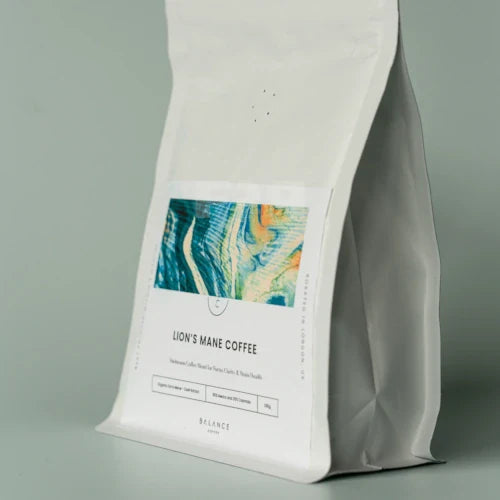







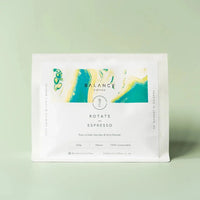

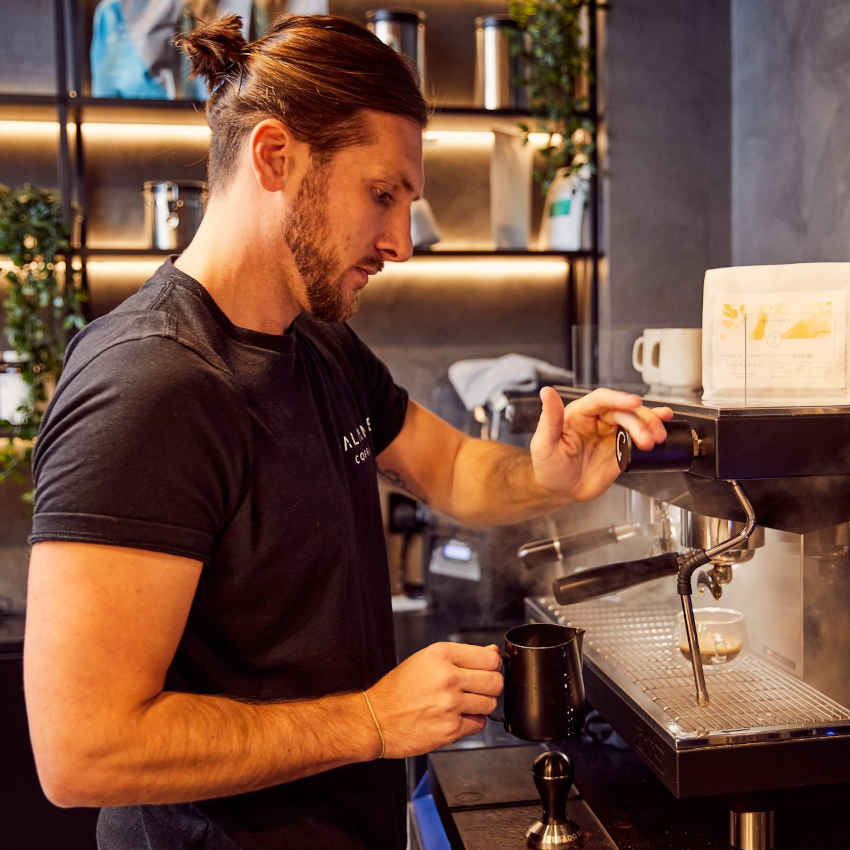
 e
e
